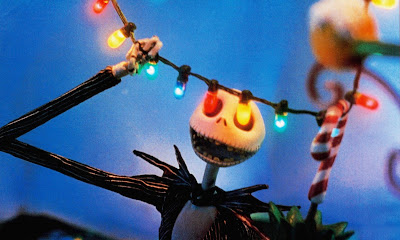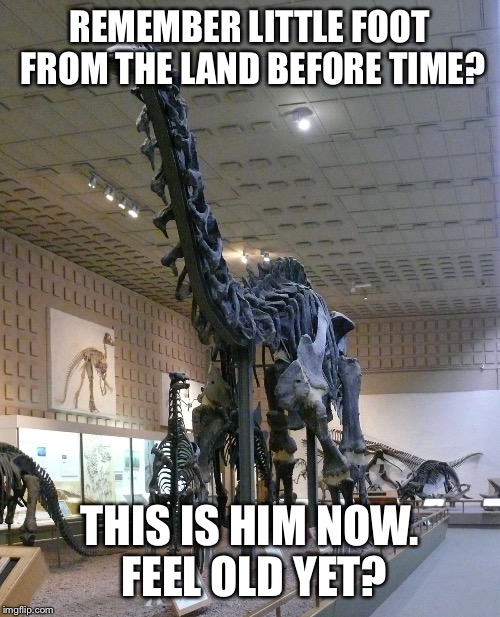In reply to my friend
@kayjoon 's blog post, here are my top five Chrimbly films. His list is very good, and his choice of
National Lampoon's Christmas Vacation is fine and good, but he shall forever disagreed with for not putting the Muppets at the very top.
5. Gremlins (1984)
Perhaps the grimmest, certainly the nastiest Christmas movie that isn't an out-and-out horror, although it comes close. It came out in the middle of summer, something that went down poorly with writer Chris Columbus and director Joe Dante, but it is undoubtedly a Christmas film, being not only set at Christmas but very much about it. People have argued for years about who or what the gremlins are meant to represent, but for me it seems clear that they stand for the crass commercialism of the modern Christmas and the potential damage it can do to a true family Christmas.
Spielberg got the film made, and his influence toned down the horror elements and made it into a just-about-family-friendly movie, albeit one that helped reconfigure the film ratings system (along with
Indiana Jones and the Temple of Doom, Spielberg used it to campaign for a new rating between PG and R, which led to the adoption of PG-13 in the US and the UK rating 15 in its stead). The original script had cute little Gizmo turn into the murderous monster; instead he produces already pretty nasty offspring that become worse after their transformation. The film loses some of its point because of this, but it's unlikely it would have been the same hit if the one cutesy and marketable character became a demonic killer. Still, they did manage to keep in Phoebe Cates's horrible soliloquy about her character's tragic history with Christmas, which Dante fought with Spielberg to keep. It's the indicative moment that combines the joy and misery of family to blackly comic effect.
4. The Nightmare Before Christmas (1993)
OK, this is as much a Hallowe'en film as a Christmas one, and was released as such, but it provides the perfect intro to the Christmas' movie marathon. Both festivals are the modern evolutions of ancient pagan festivals that ushered in the dangerous winter months, so they go together, and ghosts always work well at Christmas (see below).
Nightmare might also be taken as an attack on the commercialism of Christmas, on how it doesn't matter if you get the look and trappings right, if the spirit isn't there (Christmas spirit, not Jack Skellington).
Although one of the most Tim Burton-esque films, people tend to forget it was Henry Sellick who directed it, and the stop motion style is absolutely perfect for the childishly spooky setting. The songs are pretty brilliant too - the opening song "This is Hallowe'en" is clearly the best, but "Oogie Boogie's Song" works very well too, and is eminently coverable.
Nightmare was perfectly designed to appeal to nine-year-old me, with just the right level of monsters and ickiness. Christmas isn't Christmas unless you feel a bit sick once it's over.
3. Trading Places (1983)
The eighties really were a good time for darkly comic Christmas movies. Basically a modern take on the 19th century novel
The Prince and the Pauper - something so much part of American literary culture that even Mickey Mouse starred in a version, as with
A Christmas Carol (see below).
Trading Places has Dan Aykroyd's up-and-coming Harvard graduate Louis Winthorpe cast out of his home and job, while Eddie Murphy's street-living beggar Billy Ray Valentine is given his old position, all as part of a social experiment by the money-grabbing Duke Brothers. Aykroyd and Murphy are great, but the film belongs to the side cast, with Ralph Bellamy and Don Ameche the stand-outs as money-grabbing modern Scrooges the Dukes. Jamie Lee Curtis plays her most likeable character in Ophelia, Winthorpe's unlikely love interest, and Denholm Elliott is perfect as manservant Coleman. Often overlooked, though, is Kristen Holby, who is utterly spot-on as Winthorpe's snooty, icy fiance Penelope.
Winthorpe's descent into social hell culminates in his taking a desperate position as the most wretched Santa Claus ever committed to film, very nearly ending in violence, suicide and stolen smoked salmon. It's on the edge of being a Christmas film, general social commentary, particularly racial stereotyping and privilege being its main concerns, but setting it in the run up to Christmas and New Year makes the cruelty all that stronger. Also, it's got more tits in than the rest of this list.
2. Scrooged (1988)
Frank Cross is Bill Murray's second greatest role (the first being, of course, famous parapsychologist and date rapist Dr. Peter Venkman, and no,
Ghostbusters II is not a Christmas film, it is a New Year's film). The second greatest screen version of
A Christmas Carol, Scrooged is brave enough to give a genuinely modern take on the story, albeit one that is now overdue for another treatment. You could easily remake
Scrooged with updated settings every twenty years or so. Making the Scrooge analogue a heartless TV exec was a stroke of genius. Murray and director Richard Donner did not get along at all well, but this tension reflects well in the production and there's even a hint that Murray carried some of Donner into his performance.
The subject of Frank's callous disregard for human life is low-level team member Bobcat Goldthwait (whatever happened to Bobcat?); Scrooge's nephew becomes Frank's brother James, played by Bill's real-life brother John Murray; John Glover makes a memorably fake and vacuous "LA slimeball" after Frank's position. Karen Allen has her best role as do-gooder Claire, the Belle figure of this Scrooge's life, albeit one who isn't so lost to him as in the original. Most affecting, of course, are the always brilliant Alfre Woodard as the Cratchit figure Grace, and her mute son, played silently Raphael Harris in the potential future and almost silently in the present by Nicholas Philips. If you're not buoyed up when he says, "God bless us, everyone," you have a heart of stone.
Then there are the ghosts. With even the deliberately obscure Ghost of Christmas Past often portrayed in similar ways on screen, and the Ghosts of Present and Future being straightforward, we often know what we're getting with the ghosts. Not with
Scrooged, which from John Forsythe as the ghost of his boss (Lew Hayward, the man who invented the miniseries!) take new, imaginative, hilarious and terrifying forms. David Johansen of the New York Dolls is the revoltingly unlikely Ghost of Christmas Past, Carol Kane is truly brilliant as the gleefully violent Ghost of Christmas Present, and the Ghost of Christmas Future is the most terrifying ever put to screen (with the exception of
Mickey's Christmas Carol). For all the cynicism on display, the story moves to a rousing and moving conclusion, and there should not be a dry eye in the house. Thanks to
Scrooged, "Put a Little Love in Your Heart" will forever be a Christmas song, and we'll always know the name of the ship that took them all to
Gilligan's Island.
1. The Muppet Christmas Carol (1992)
Hands down, the greatest Christmas movie, the greatest screen version of
A Christmas Carol, and the only film on this list which would be on my overall top five. Although made by Jim Henson Productions, this was made after Jim Henson's death by his son Brian and from the initial idea by Bill Haber, who saw the original novel as the greatest story ever and one ripe for adaptation. As with previous Muppet movies, the decision to make it as a mixture of human actors and puppets must have led to all sorts of logistical problems, but works brilliantly. The greatest respect has to go to Michael Caine, who gives a career-best performance as Scrooge, acting with Muppets without blinking an eye and absolutely selling the character's transformation. Casting Muppets as legendary characters, such as Kermit the Frog as Bob Cratchit, could have failed badly, yet somehow fits perfectly. It's best not to think too much about a world where frogs and pigs sit down to eat roast goose, and vegetables can sing.
Surprisingly, this adaptation is among the most faithful to the original text, not least because Charles Dickens is a character, thereby allowing his voice as narrator a part in the film. The fact that Dickens is played by Gonzo the Great is neither here nor there. The new Muppets created to be the ghosts are remarkable, not least the ethereal spirit that appears as the Ghost of Christmas Past, realised by filming a puppet in a tank of oil/water mixture and superimposing the footage, translucent, onto the film. The greatest idea, however, has to be making Statler and Waldorf the brothers Marley ("It's good to be heckling again!" "It's good to be doing anything again!"), so that somehow, "The Marleys were dead, to begin with," sounds perfectly correct and natural.
The songs are perfect to sing along to, the lines are endlessly quotable, and if you ever get the chance to watch it with Gonzo and Rizzo's commentary, I recommend it. It's a truly uplifting film, perfect for the whole family, at any time of the year - because wherever you find love, it feels like Christmas. Although I do suspect the entire thing came about so that they could use the Fozziwig gag.
Honorable mentions:
As mentioned above,
National Lampoon's Christmas Vacation narrowly missed out and is an absolute classic of the often poorly realised Christmas comedy genre.
Mickey's Christmas Carol was left out for not really being a feature film, at only twenty minutes long, but my, it's an epic twenty minutes. I'd be remiss if I didn't mention
Die Hard, but it's never going to make my top movies list, however good an actioner it is. I have fond memories of the Dudley Moore vehicle
Santa Claus: The Movie, but I recognise that this is nostalgia and it is in no way a good film. The 1991 Raymond Briggs film
Father Christmas also deserves a mention - it's far superior to
The Snowman, although both are TV films and not really applicable to this list. The 1999 ITV production
The Flint Street Nativity would probably top my Christmassy TV movies list.



















